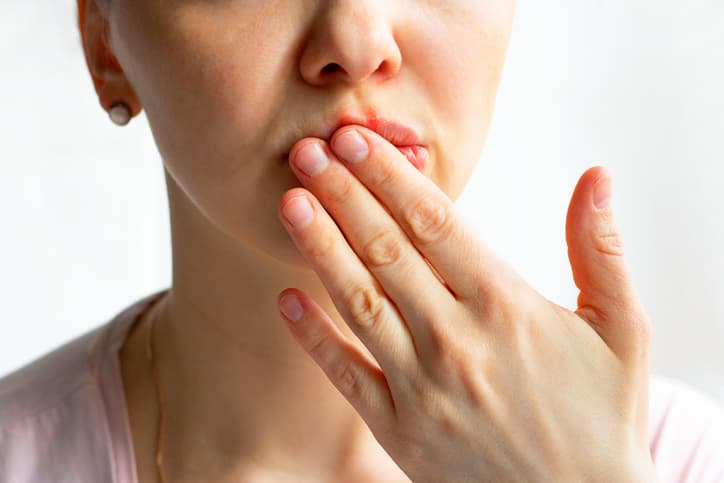 How can something so tiny be so annoying and painful? Cuts inside your mouth can happen to anyone. They can make your lips or cheeks swell, and they burn when you eat citrus fruits or drink hot beverages. Thankfully, because they are so common there are clear and easy tips to help them heal. We’ll give you the rundown of why these little injuries can be a real pain and answer your questions about how to treat inner lip or mouth wounds.
How can something so tiny be so annoying and painful? Cuts inside your mouth can happen to anyone. They can make your lips or cheeks swell, and they burn when you eat citrus fruits or drink hot beverages. Thankfully, because they are so common there are clear and easy tips to help them heal. We’ll give you the rundown of why these little injuries can be a real pain and answer your questions about how to treat inner lip or mouth wounds.
Why do mouth wounds happen?
Cuts on the lips, tongue and the inside of the mouth happen to almost everyone. These areas have the softest, thinnest skin on your body, so the smallest bump or scrape can break the skin. You may have gotten wounds from your teeth cutting the inside of your mouth or bruised your lips from accidentally biting down. Some inner lip wounds can be canker sores or cold sores.
Most inner lip or outer lip wounds are minor. Sometimes injuries can be more serious, such as injury to the face in a fall or car accident. In these instances, you should call your dentist to examine the wound.
It may be scary at first to feel or see a wound in your mouth because they tend to bleed more than a cut on another part of your body. Not only is that skin soft and vulnerable, but it’s close to blood vessels, increasing the amount of bleeding. It’s important to clean this area with good oral hygiene which will help it heal.
How do you treat cuts on your lips?
If the cut or wound is on the outside of the mouth like on your lips, you can easily keep it clean with mild soap, warm water and a clean cloth. Apply pressure with the towel to stop or slow any bleeding. If the bleeding does not stop, or the cut is very deep visit your doctor or an emergency room right away to ensure you don’t require stitches.
What should you put on cuts inside your lip or mouth?
You can easily do inner lip wound care at home. Rinse with salt water multiple times a day, like after meals. Don’t swallow these solutions. Don’t worry if putting hydrogen peroxide on the lip or mouth wound makes your wound foam up a little, that’s normal when peroxide meets skin. Cleaning the wound with these solutions will ensure there’s no dirt or debris in the cut and allow your body to heal itself even faster.
When should you call your doctor about a mouth wound?
Here is where it may be scarier than a little cut. Pay attention to your body and if any of the following are true, contact your doctor:
- Bleeding does not stop even after putting pressure with a cloth
- The cut on your inner lip is deep
- The cut extends from your mouth to the face
- The cut in the lip is a puncture or hole
- You develop any of these signs of infection:
- Redness that expands to the surrounding area
- Tender and painful
- Fever develops
- A pimple-like swelling with pus
- Swelling increases and bruising of skin or hematoma may occur
If your mouth wound is around a tooth and the tooth is loose or broken, call your dentist. While you are waiting to see your dentist, the ADA suggests cold compresses and rinses in the meantime for sores and mouth injuries.
How do you prevent cuts in your mouth or on your lips?
If you’ve developed an injury from sports or other physical activities, a mouth guard could prevent your teeth from scraping your cheeks. Mouth guards provide a solid yet soft surface for your teeth. Your teeth can clench down on it instead of the inside of your mouth! They will also prevent you from biting your lips and accidentally breaking the skin. Mouth guards can be customized for you by your dentist.
Be patient and let your cut heal
By keeping your wound clean, you are letting your body focus on healing the wound. If you are still concerned about the pain or swelling, call your doctor or dentist, and they can assess if you need further treatment. Until then, rinse with salt water, and stop yourself from touching it and use cold compresses to help with any swelling or bruising. With these tips, the injury is on its way to healing.
